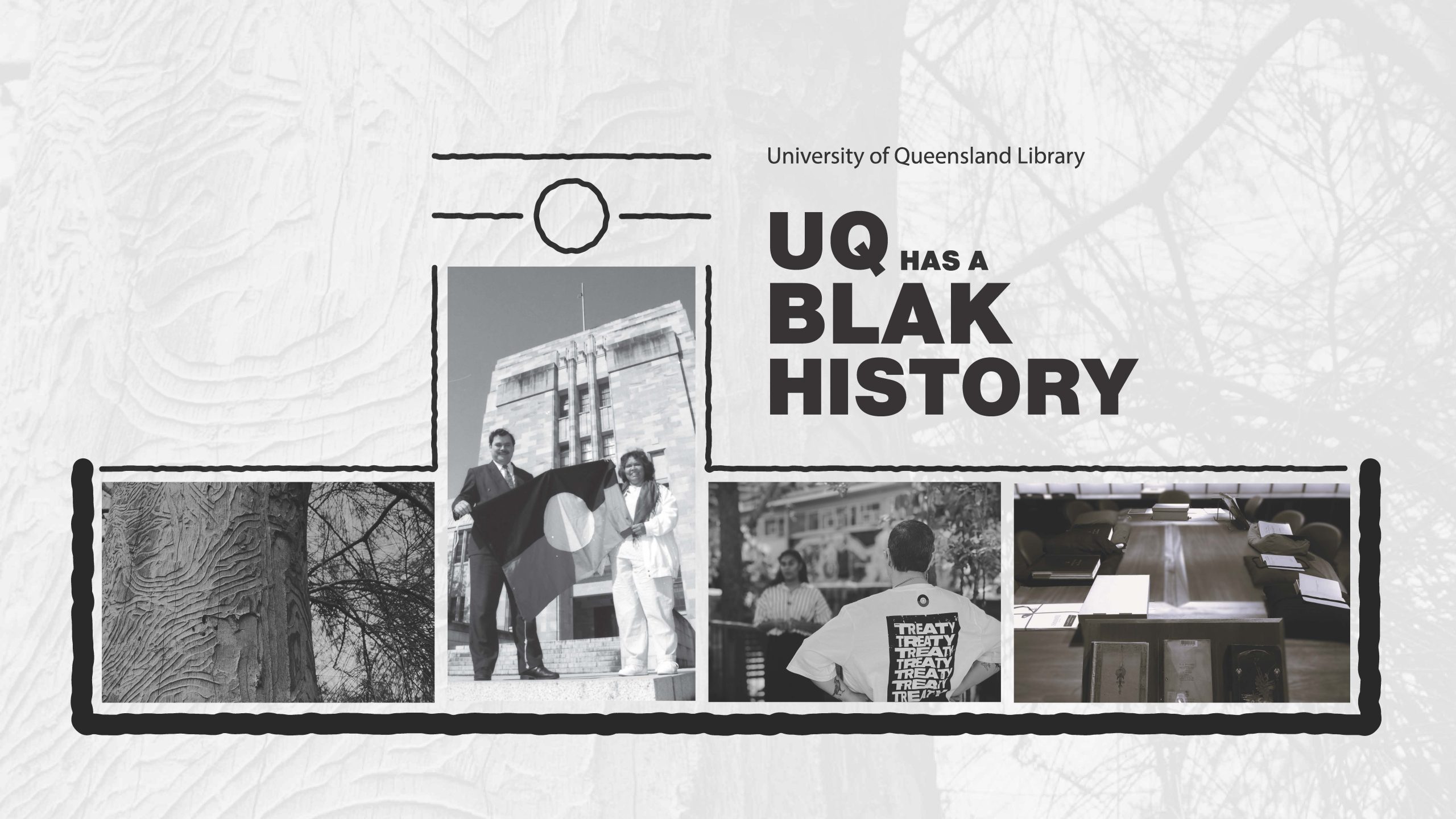Introduction
 UQ has a Blak History introduces information about the history of UQ as it relates to Aboriginal and Torres Strait Islander peoples, cultures and communities. This module was created in the spirit of truth-telling and healing. By delving into the Blak history of UQ, this module will highlight the importance of pushing back against harmful systems and make space for current and future partnerships with Aboriginal and Torres Strait Islander peoples and communities to prosper.
UQ has a Blak History introduces information about the history of UQ as it relates to Aboriginal and Torres Strait Islander peoples, cultures and communities. This module was created in the spirit of truth-telling and healing. By delving into the Blak history of UQ, this module will highlight the importance of pushing back against harmful systems and make space for current and future partnerships with Aboriginal and Torres Strait Islander peoples and communities to prosper.
The module will take participants through:
- the significance of Country and place to Aboriginal and Torres Strait Islander peoples, including significant sites across UQ campuses.
- the history of Aboriginal and Torres Strait Islander students, academics, researchers, and community members and their relationships to the University.
- significant political movements and activism and their importance to Aboriginal and Torres Strait Islander communities.
- an overview of significant collections across the University will be highlighted and include Library collections, the Anthropology Museum, the UQ Art Museum, and UQ Archives.
By the end of this module, participants will understand the rich history they are part of here at UQ. For participants wanting to learn more, further resources will be provided at the end of the module.
UQ has a Blak History – Acknowledgement and Introduction (YouTube, 2m 25s):
Historical Context
Australia has a rich history that spans tens of thousands of years. During this history, Aboriginal and Torres Strait Islander peoples have and continue to care for Country. After invasion, this history was minimised or rewritten to perpetuate the colonial narrative of terra nullius—the idea that Australia was uninhabited at the point of colonisation. To this day and in all areas of society—from education and employment to health and wellbeing—Aboriginal and Torres Strait Islander peoples often face systemic racism.
This module will use research and primary source material to analyse the ways in which systemic racism and ongoing colonisation affect Aboriginal and Torres Strait Islander peoples within an academic environment. It is important that all of us acknowledge the past so that we can move together into a brighter future.
How to Use This Module
This module is one part of your cultural capability journey. Use this module to:
- gain an understanding of how Aboriginal and Torres Strait Islander peoples have survived colonisation, despite systemic barriers put in place to suppress or eradicate us.
- establish foundational knowledge about Aboriginal and Torres Strait Islander peoples’ relationships with UQ and how those relationships have changed over the years.
- learn about the contributions Aboriginal and Torres Strait Islander students and staff have made to UQ.
- discover the significant Aboriginal places across UQ campuses.
- appreciate the ongoing cultural connections and contributions that Aboriginal and Torres Strait Islander students and staff make to UQ.
Visual Identity
The visual identity in this module is a result of an exchanging creative process. Each photo authentically represents a section within the module. The photos were either captured by staff in the Aboriginal and Torres Strait Islander Services and Collections Team or provided by UQ Archives.
Each photo tells its own story relating to the content. The image representing Country and place is of a tree with intricate patterns and grooves. This photo was taken by Georgina Baumann, Aboriginal and Torres Strait Islander Library Officer, during one of her “wonders and wanders” walks at UQ St Lucia campus. The photo image representing Blak Education is of Dr Lilla Watson and Matt Foley at the first flag raising at UQ outside the Forgan Smith building. This photo is housed within UQ Archives.
The image representing Blaktivism is of Raelee Lancaster, Principal Adviser for the Aboriginal and Torres Strait Islander Services and Collections team, naturally standing strong ways Wiradjuri wearing a Treaty t-shirt. This photo was captured by Caitlin Murphy, Principal Adviser, Aboriginal and Torres Strait Islander Services and Collections, during the filming for this module. The image representing Collections is of a display in the Fryer Library during a visit from lawyer and writer, Terri Janke. This image was also taken by Caitlin Murphy.
These photos sit side by side, reflecting the sandstone blocks of the institution with an outline of the Aboriginal flag on top of the building.
Iscariot media supported the design by using their graphic designer.

